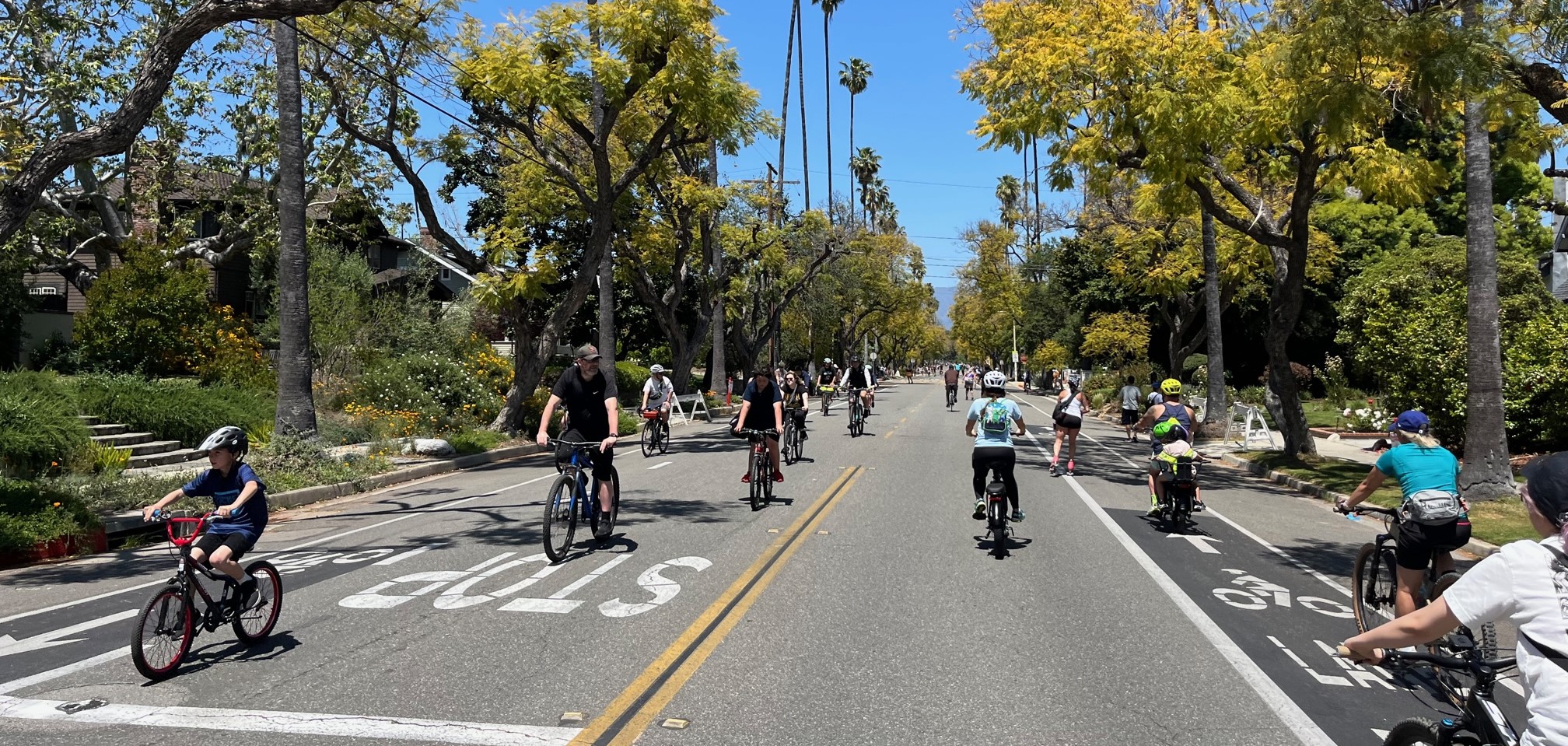County Board of Supervisors Approves Condemnation of Vermont/Manchester Lots, Moves Forward on Eminent Domain
9:13 PM PST on December 5, 2017
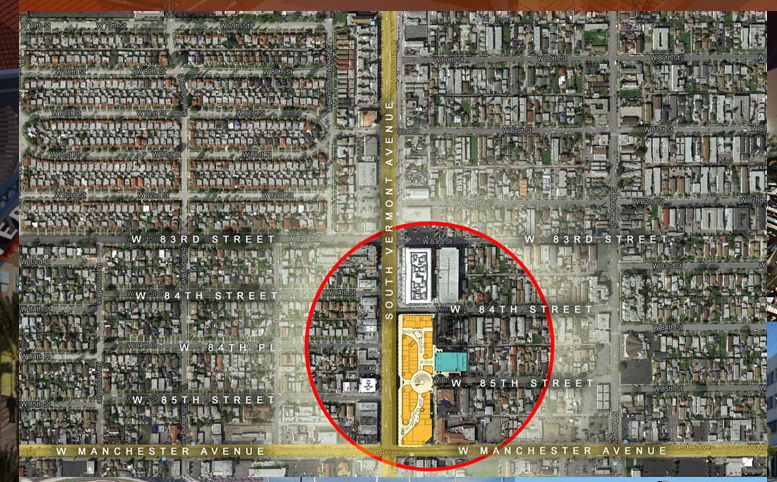
The County voted to condemn the lots at Vermont/Manchester and begin the eminent domain process, nearly 26 years after the structures there burned to the ground. (Image: Sassony Group)
Despite lawyer Robert Silverstein's claims that the developer had not received pre-condemnation offers on three recently-acquired properties and that the process underway represented a misuse of eminent domain and taxpayer funds, the County Board of Supervisors voted unanimously Tuesday to move forward on the Resolution of Necessity condemning the vacant lots at Vermont/Manchester.
The vote sets in motion the eminent domain process which the County aspires to see end in the construction of the Vermont and Manchester Transit Priority Joint Development Project: six-story structures housing 180 affordable one-, two-, and three-bedroom units, a public charter boarding school (also home to 200 dorm rooms and 20 faculty apartments), a transit career technical education center, neighborhood-serving retail (potentially including a grocer/market), community spaces, and a transit plaza.
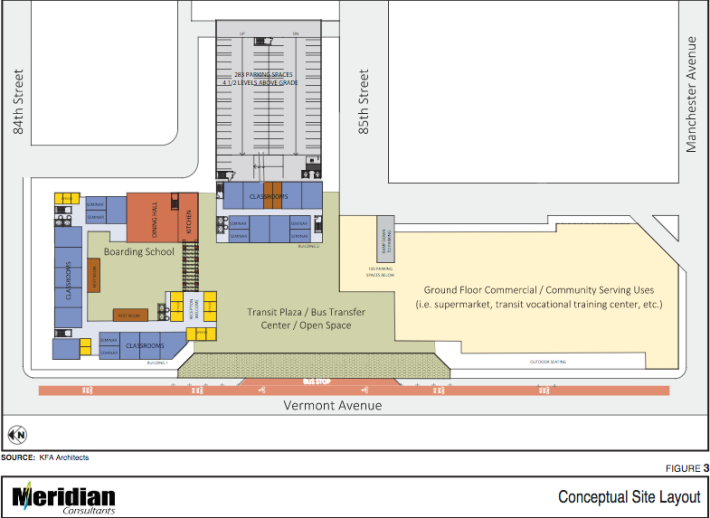
The proposed County project is a far cry from the glitzy Grove-ish-style mall the Sassony Group had planned in the effort to make the Vermont Entertainment Village a destination (below).
Pie-in-the-sky and outdated as the mall project may have been, the proposed project offered the community the kind of venue and services it has long clamored for.
Perhaps more importantly, when built, it would have finally confirmed to the world what residents knew that few outside the neighborhood were willing to believe - that South Central and its people were worthy and deserving of investment.

The fact that the community has spent nearly 26 years waiting for this project to materialize is just one of many reasons that the County's vote to condemn the lots came as no surprise.
As both County Supervisor Mark Ridley-Thomas and Eighth District Councilmember Marqueece Harris-Dawson noted in their remarks, the five blighted acres anchoring the intersection of two important corridors had received at least 37 notices of violations over the last twenty-five years, effectively squelched any positive spillover impacts from investments made in the surrounding area, and attracted encampments and activities that endangered area residents. Recently, the lots had been the site of aggravated assaults, robberies, shootings, a man being set on fire, and people being chased by a man armed with a machete.
Children had been born, grown up, and gone on to begin their own families all while the lots continued to limit the potential of the area, said Harris-Dawson. And this was only one of several sites developer Eli Sasson owned, the councilmember continued, gesturing toward a stack of photos of other blighted properties. Allowing Sasson to continue holding that site, the councilmember suggested, would only serve to perpetuate those harms.
The site's location on the second-busiest transit corridor in the county and within walking distance of the Silver Line meant it had great potential to connect people to jobs and opportunity - potential neither he nor Ridley-Thomas felt the community could afford to see squandered any longer.
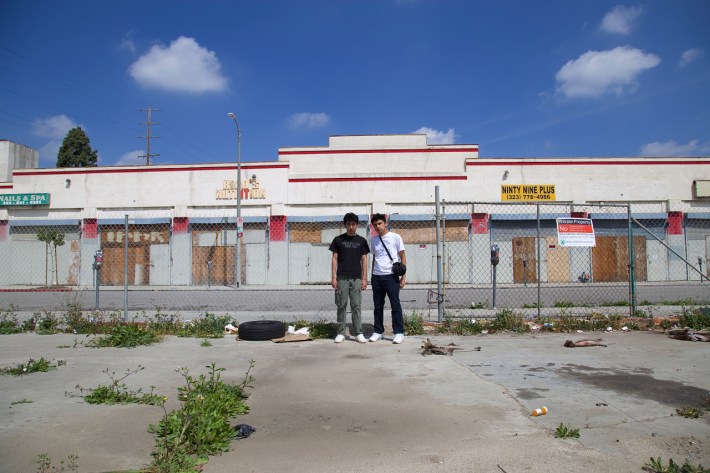
The developer's pushback against the County and effort to blame it, the city, and the CRA/LA (the successor to the Community Redevelopment Agency) for thwarting Sasson's efforts to get the mall project off the ground was no surprise, either.
Where Sasson had once claimed to both myself and the L.A. Times that it was electrical wiring and permits that were holding up the process, the developer's representatives now focused on three smaller parcels within the larger lots for which they had finally secured escrow this past November 15.
The County was trying to seize private property and impede free enterprise just as Sasson got everything lined up to bring his and the community's vision to fruition, representatives argued, offering up a petition with 790 signatures in favor of the mall project. And given that there were so many other vacant properties where the County's project could be built, Silverstein argued, the County hadn't established that acquisition of the Vermont/Manchester lots was necessary, as is required by law.
Such a misuse of eminent domain - especially one hinging on a "flawed" process that representative Gary Kovacic claimed didn't even bother to cite proper statutes - would not stand, they said.
For its part, the County Counsel denied the process had been improper and reassured the board that pre-condemnation offers had been sent to the requisite parties regarding the 16 parcels in question. The 380-page Resolution of Necessity also anticipated some of these complaints, justifying the County's claim on the land by, among other things, tying the lots' unique siting at the intersection of two important transit corridors and the planned implementation of Bus Rapid Transit along the length of Vermont to the proposed transit career training center.
The eight objection letters and 5,000 pages of documents Silverstein said the developer had rushed to submit in protest of the lots' condemnation, in other words, would be of little consequence.
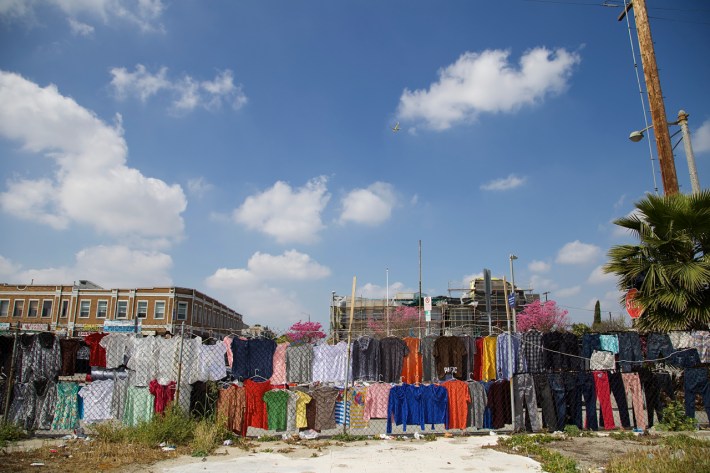
The condemnation of the lots and the launch of the eminent domain process has the potential to mark a major turning point for the area hardest hit by the civil unrest and slowest to recover.
Whatever their position on the County's proposed project, all of the stakeholders that provided public testimony were cognizant of this. As such, they were unified both in the belief that the property was essential to the recovery of the area and in their weariness with the deep disrespect for the community that decades of blight conveyed.
Many had attended the groundbreaking ceremony for the Vermont Entertainment Village two years prior and, as they watched conditions continue to deteriorate at the site, had had to wonder if yet another promise to the community was being broken before their eyes.
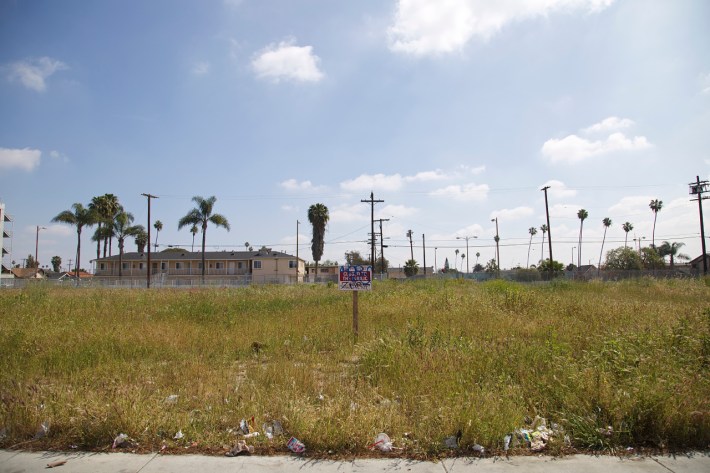
The community members' divergence on what to do about the lots speak to the challenges inherent in trying to mitigate the generations' worth of harms disenfranchisement, disinvestment, denial of opportunity, and repressive policing have inflicted upon the area.
The construction of housing, a school, and a career center would limit opportunities for retail and services. A grocer/market - tentatively included in the County proposal - would be a welcome addition to the area, but wouldn't provide a "destination" in the way that a project centered around retail and entertainment would.
Even Congresswoman Maxine Waters chimed in via letter, arguing that she could not support another affordable housing project that did not offer the kinds of entertainment venues, retail, and services that were needed to support and employ a thriving community. Least of all in a community that she believed already had a disproportionate amount of affordable housing while still lacking basic amenities.
Karen Lawrence of the 108th St. Neighborhood Association concurred, asking that the mall project be allowed to move forward by way of lamenting the extent to which basic services were nowhere to be found. It was unfortunate that constituents had to lobby just to get the minimum in amenities other communities could take for granted, she told the board. But they did, so there she was, she said, making her voice heard.
Others agreed, telling the supervisors they were tired of having to leave their community to spend their hard-earned dollars. They were also tired of having to leave the community for entertainment or to find places where they could take their children and grandchildren. Not only did the mall project promise to remedy this problem, some said, it could also help create pride in the community in a way that a transit plaza and boarding school could not.
At the very least, the community should have been notified of the County's proposal, others declared.
Elisa McGhee of the South East Neighborhood Council said she had only learned about the proposal a few days earlier, via social media. Considering the vested interest stakeholders had in the community's well-being and how much so many had invested in lifting up their neighbors, she and others suggested, the community should have been consulted on such a significant change of plans.
Those speaking in favor of the County's proposal did not necessarily disagree with the sentiments expressed by those speaking against it. Instead, their comments, like those of Robert Rubin of the Vermont Village Community Development Corporation, spoke to a distrust of the developer's intentions and of his capacity to follow through on the project. Whether or not they saw the County proposal as ideal, it was clear that they had a deep desire to see a genuine and sustainable investment in the community finally materialize on the site.
Congresswoman Karen Bass wrote in to voice her frustration with the number of times residents had "been promised various degrees of redevelopment, resources, jobs, and housing on [the] site" over the decades. Such neglect would never be tolerated in other communities, she said. Youth organizer Dennis Ojogho took her point further, noting that the community had initiated the unrest in 1992 because of the neglect it had endured in the years leading up to that moment. The persistence of blight decades later, he said, suggested that little had changed in that regard.
In neglecting the lots, representatives of the Children's Collective, Inc. said, the developer had put the children and families that had to navigate them to reach the center (located adjacent to the lots, on Manchester) at risk. And hanging onto those lots stunted the community's growth. Joyce Fantroy of the 90th Street Plus Block Club concurred, arguing that it was not the community that was lacking in vision, it was the developer that had kept them from being able to realize that vision. Pastor Anthony Williams of the 80th Street Temple Church dug a little deeper, declaring that a developer that did not live there, did not serve the people there, and did not engage those in need - those that had lost children to the streets and those that had suffered - had no stake in the area.
With no true stake in the community whose struggle had been made that much more intransigent by the very lots in question, speakers implied, there were limits to the claim the developer could make on the land.
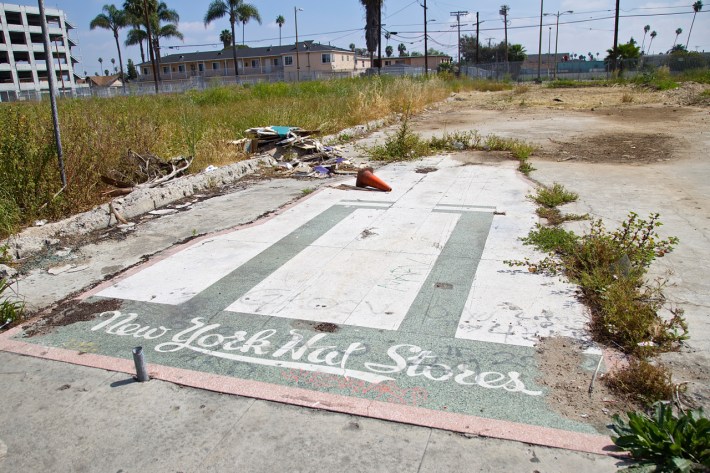
Although he normally didn't support eminent domain efforts, stakeholder James Harris said begrudgingly of the County's proposal, this time was different.
Too many years had passed; too many promises had been broken.
"Something has to happen at that corner. And the current owner, for whatever reason, can't make that happen." he said solemnly. "We have to move forward because some of us are getting old."
***
The Resolution of Necessity condemning the vacant lots at Vermont/Manchester was adopted by unanimous vote, initiating the eminent domain process. As expected, lawyer Robert Silverstein said the developer would likely sue if the process were to move forward; this claim was reiterated by Chief Operating Officer Jennifer Dueñas in a press release sent out after the vote, although no specifics were offered. See our previous coverage of the project below:
- November 30, 2017: County Looks to Eminent Domain to Rewrite Future of Vacant Lots at Vermont/Manchester
- April 6, 2017: South Central Youth Assess Stasis and Change 25 years after the 1992 Unrest
- June 1, 2016: A Year after Breaking Ground at Vermont and Manchester, Major Shopping Center Project Appears to Have Stalled
- April 30, 2015: Vermont Entertainment Village Breaks Ground; Residents Ask That Local Hiring Be Cornerstone
- April 28, 2015: Long-Blighted South L.A. Lots to See Groundbreaking on Massive Development Wednesday
Sahra is Communities Editor for Streetsblog L.A., covering the intersection of mobility with race, class, history, representation, policing, housing, health, culture, community, and access to the public space in Boyle Heights and South Central Los Angeles.
Stay in touch
Sign up for our free newsletter
More from Streetsblog Los Angeles
This Week In Livable Streets
Bike Month, Hyperion street safety, Eastside rail plans, Pasadena transit, CicloIRVINE, Culver City bus service, and more
Active Streets Mission-to-Mission – Open Thread
Tens of thousands of participants biked, walked, skated and scootered on car-free streets through San Gabriel, South Pasadena and Alhambra
Metro Board Funds Free Student Transit Pass Program through July 2025
Metro student free passes funded another year - plus other updates from today's Metro board meeting

